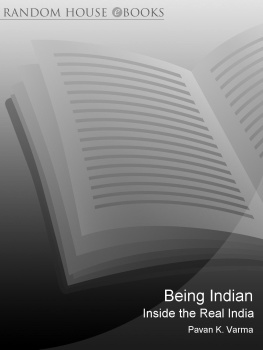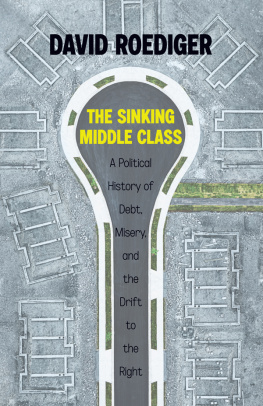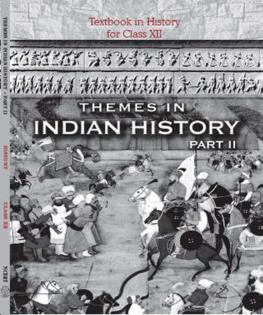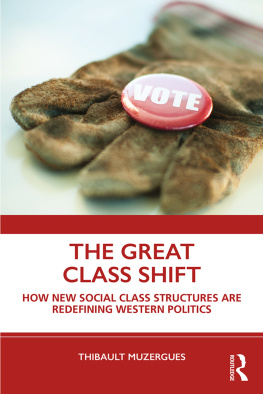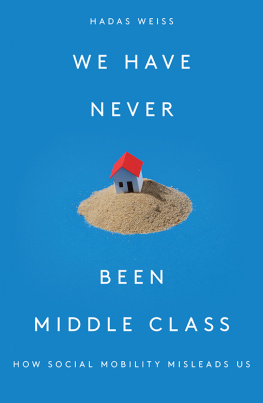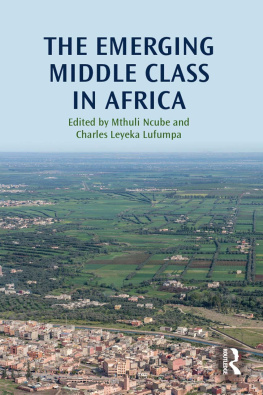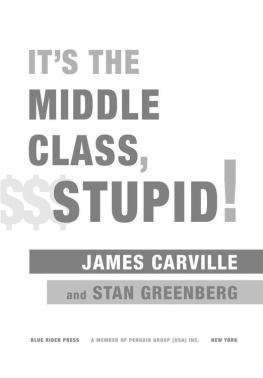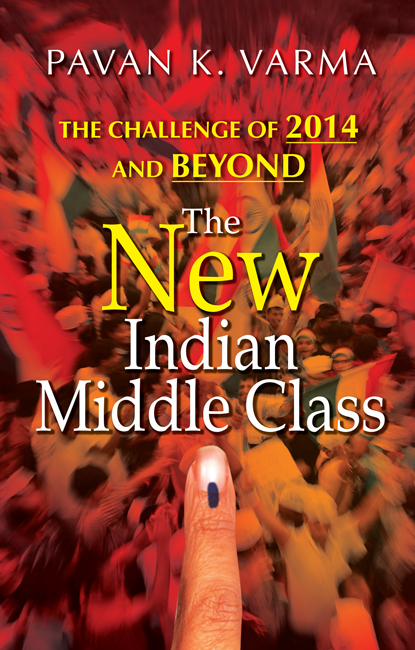
For Leela, my newborn granddaughter,
and for my sisters, Juhi, Bela and Nalini.
Chalta hun thodi der har ek tez rau ke saath
Pehchanta nahin hun abhi rahbar ko main
(I walk a little while with every fast-moving swirl
I do not as yet recognize my true mentor and guide)
Mirza Ghalib
CONTENTS

T he young republic of India is in crisis, and the Indian middle class is both an eloquent participant and a marginal spectator. There are reasons for this dichotomous situation. It is not uncommon in history for a class to graduate to a much bigger potential, while being largely unaware and unprepared for such a role. The dynamics of societal transformation have worked at one level, and the awareness of the class whose role has undergone a major change, has evolved at another, leading to a disjoint between reality and awareness. The Indian middle class is at just such a cusp in its evolution. For the first time, it is going to be a player of importance in the elections in 2014, and in those to come in future. Strategies of how to tackle it are being hatched in the war rooms of all political parties.
The middle class is not entirely unaware of its new-found importance. But is it also aware of what has changed and in what manner, and has it decided whether it will be merely diffused cannon fodder for manipulative political forces or a definitive game changer in its own right? This is the historical choice before all middle-class Indians, and 2014 is going to be the watershed to test whether that choice is made wisely or not.
There are at least seven reasons why the role of the middle class has changed today, and each of them constitutes a first in the evolution of this class. Firstly, for the first time, the middle class has reached a numerical size which constitutes a significant critical mass in the electoral arithmetic of the nation. Secondly, this growth in numbers has reinforced the incipient homogeneity of this class to a point where, more than ever before in our history, it constitutes a distinct class with an identity that significantly transcends caste loyalties. Thirdly, this numerically sizeable class has for the first time acquired a footprint which is pan-Indian in scope, meaning thereby that it is represented as an identifiable entity in greater numbers than hitherto in all parts of India. Fourthly, this middle class has never been younger, with the bulk of its members being around the age of twenty-five. Fifthly, the powers of this class have undergone a veritable revolution with respect to information and communication, and consequently of influence, due to mobile telephony, social media and 24x7 news. There are few parallels in history for any class to have obtained such powerful instruments in such a short period of time. Sixthly, in a break from its past behavioural insularity, the middle class has, in recent years, given the first indications, however tentatively and selectively, of a willingness to be involved in issues which are not restricted to its immediate and exclusive ken of interests. And lastly, never before has the Indian middle class been angrier at the failures of governance, the mismanagement of the economy, and the corruption, cynicism, lack of idealism and the moral bankruptcy of the political class and those who are in collusion with it.
Together, these seven reasons constitute a qualitative change in the character, role, influence and potential of the middle class, and it would be useful to briefly discuss each of them. In 1947, the middle class was largely a small and exclusive club, mostly a creation of the colonial interaction with the British. In the decades that followed, it gradually grew in numbers, incorporating millions of shopkeepers, small-time entrepreneurs, semi-skilled industrial and service workers and lower-level salaried households with a small disposable income. Among the new entrants were the bullock capitalists from the countryside, who husbanded their resources carefully and benefited both from state subsidies for agriculture and the implementation of the Mandal Commission Report in 1990 on reservations in government jobs. But, undoubtedly, the most decisive intervention in the quantum growth of the middle class were the 1991 economic reforms and the higher growth rates they heralded. As the size of the economic cake grew (Indias annual per capita income has grown from $530 in 2003 to over $1600 today), so did the jobs and business opportunities for the middle class, far more than for those below it. This was because the higher growth rates in the decade and more that followed 1991 had a structure which was specifically conducive to the middle class. For instance, the service sector grew at a much higher rate than agriculture and industry, and accounted for a much bigger share of the overall economy. Similarly, the IT boom at the turn of the millennium was a sponge for the thousands of technically trained graduates produced by the expanding network of higher educational institutions.
Is it possible to give an exact size for this class today? To my mind, in the Indian context, anybody who has a home to live in and can afford three meals a day for the family, with access to basic health care, public transport and schooling, and some disposable income to buy such basics as a fan or watch or cycle, has already climbed on to the lowest level of the middle-class bandwagon. By these parameters, the middle class could well be more than half of our total population of over a billion, below the two per cent of the very rich and above those below the poverty line, or those not destitute but still very poor. Beyond such a broad generalization, the numbers are still very substantial even if we take a strictly economic criterion. If we define a middle-class person as anyone who belongs to a household whose monthly income is between Rs 20,000 and Rs 100,000 a month, a reasonable yardstick by Indian standards of living, the middle class could be, as per estimates, anywhere in the vicinity of 200 million, and would reach around 300 million by 2015. For a class that was, with cost of living variations factored in, a paltry twenty-five million in 1996, this is dramatic growth indeed.
Max Weber has defined a social class as a people having the same social, economic and educational status. Caste, on the other hand, is a prescriptive categorization based on birth. The caste system has prevailed in India for millennia, and it would be wishful thinking to believe that it has been legislated out of existence on the altar of democratic equality. One example of its continued hold on the middle class can be seen in the matrimonial ads in newspapers every Sunday, where the great majority of those seeking conjugal bliss are still segregated in accordance with caste. An institution that has such a hoary lineage will not die overnight or by legislation. But it is equally true that in the decades since 1947, and especially after 1991, the stranglehold of caste on the middle class has verifiably loosened. What are the reasons for this development? Increased territorial mobility is certainly an important one. With the expansion of the educational infrastructure, and the overall growth of the economy, educational opportunities and job mobility have taken members of the middle class away from their homesteads and place of birth. The hold of caste is perpetuated with far greater ease when people are stranded in their native places and beholden for their every action to familial ties. When they study in universities and institutes, and find jobs, the milieu acts as a corrosive to old, unthinking fealties.
Next page

